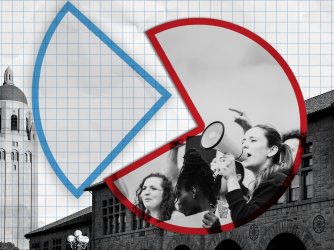Table of Contents
The Secret Life of Safe Spaces

Brown University is encouraging student-led panels and workshops on hot-button issues to be “safe spaces,” where students are “safe” to convey ideas without judging or being judged. But ironically, the one thing truly unsafe in these spaces is free speech.
Some recent examples of Brown’s safe space initiative include a panel about the experience of Asian-Americans and a discussion on the effects of hook-up culture on campuses. A safe space is intended to create an environment where everyone feels safe to share their ideas, allowing open discourse and meaningful discussion to take place. A “safe space” designation includes specific guidelines to be set forth in order to guide the discussion towards that open environment.
Guidelines for the workshops include mottos like “What’s said here stays here, what’s learned here leaves here” and “Trust intent, name impact.” The former is supposed to encourage people to share their thoughts without fear of judgment, allowing attendees to leave having heard new concepts. The latter means that when something potentially offensive is said, the listener should trust the intent of the speaker in that they didn’t mean to be offensive, but they should name the impact that statement had on them.
In theory, these guidelines help ensure that productive discussion happens at these events and that everyone has a chance to make their voice heard. This is important because a discussion space where people feel free to share their ideas benefits everyone. Open discourse exposes participants to new beliefs that wouldn’t have otherwise been shared if people were afraid to speak their minds.
If these guidelines reliably led to these intended results, it would be easy to support them. It is hard to find fault with suggestions that steer a discussion towards open-mindedness and a freer exchange of ideas. However, when you look at how students are actually using these safe spaces, it becomes clear that the guidelines do not serve to further free speech in campus spaces.
For example, the “Trust intent, name impact” guideline too easily has the effect of curbing speech, as anyone can claim offense at a statement that simply goes against their beliefs. This guideline allows students to blur the line between speech that actually offends and speech that differs in opinion. Students may be afraid of getting called out for being offensive when they offer opposing views, particularly dissenting or minority viewpoints on campus. Rather than a truly safe space for expression, we end up with an echo chamber where only non-objectionable ideas are shared, which means nothing is challenged and nothing is defended.
In other cases, students are using safe spaces as an escape room to physically avoid hearing ideas they disagree with, as described in Judith Shulevitz’s New York Times column “In College and Hiding From Scary Ideas.” As Shulevitz describes in her article, a student chose to leave a debate because she was “feeling bombarded by a lot of viewpoints that really go against my dearly and closely held beliefs.” Students are placing themselves in a bubble where they can be shielded from dissenting views, which are unwelcome because they’re emotionally or intellectually threatening. Students’ refusal to listen to dissenting views, however, undermines the objective of college, where students are supposed to spend four years exposed to concepts that challenge their view of the world. Students who hide in safe spaces don’t shape and strengthen their beliefs. Further, students who hide in the bubble of safe spaces are at a disadvantage after they graduate and enter the real world, where there are no safe spaces where these students can escape to in order to avoid issues that make them uncomfortable. Because these students insulated themselves during college, they graduate without the skills necessary to handle difficult issues.
These contradictions between the intent of the safe spaces and how they are used in practice mean one of two things are occurring on my campus: Either students are knowingly creating environments where free discourse is discouraged for the sake of protecting the feelings of event attendees, or this is what they think the free exchange of ideas looks like. Each of these possibilities is a problem in its own way.
In the case of the former, students are stifling speech in order to protect themselves from being offended. Students claim that safe spaces allow anyone to share their ideas without judgment, but, in the same breath, choose to retreat to safe spaces where they can escape the threat of dissenting views. When students are unwilling to offer dissenting views out of fear of being called offensive, it hurts everyone. Stifled students are unfairly silenced, and the rest of the students are deprived of the opportunity to hear a new perspective. When students are actively avoiding listening to opposing ideas by retreating to safe spaces, there is no progress on campuses.
On the other hand, if students are perpetuating these safe spaces under the guise of thinking this is what productive conversations look like, then students need to recognize the value of being exposed to dissenting views. Meaningful discussions are not those in which everyone agrees with each other thoughtlessly but where ideas are challenged. When ideas are successfully defended, personal beliefs are strengthened and progress takes place. Therefore, open and productive conversations must have a place on campus, requiring students to stop hiding behind the pretense of safe spaces and embrace true discourse.
Daniella Dichter is a FIRE summer intern.
Recent Articles
FIRE’s award-winning Newsdesk covers the free speech news you need to stay informed.

BREAKING: New Title IX regulations undermine campus free speech and due process rights


Stanford president and provost cheer free expression in open letter to incoming class
